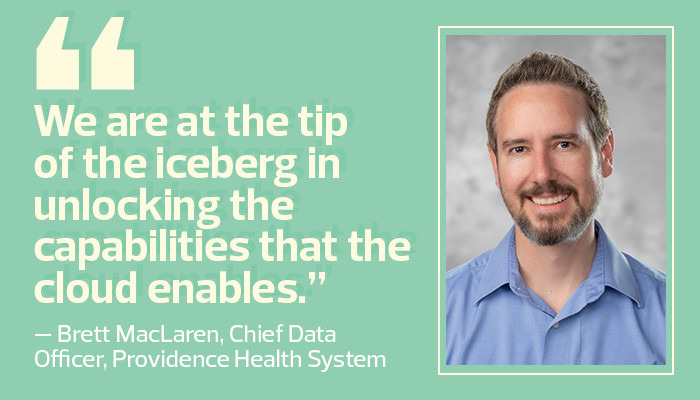Providers accelerated cloud adoption during the pandemic because it enabled them to quickly scale up their infrastructure to support patient care needs, including the increased demand for telehealth services, says Greg Caressi, global client leader and senior vice president of Frost & Sullivan’s healthcare and life sciences team. “Cloud got a huge boost from COVID-19,” he says.
But even before the pandemic, providers were already adopting cloud solutions. More than 50 percent of health IT workloads are currently deployed in the cloud, according to a recent Frost & Sullivan report.
Managing and maintaining legacy systems can cost up to 64 percent of IT budgets, so many organizations, particularly in healthcare, can’t afford to do everything on-premises anymore, says Mutaz Shegewi, IDC’s research director for provider IT transformation strategies.
“It’s mostly to modernize IT infrastructure and to facilitate digital transformation,” he says of cloud adoption.
Cloud solutions can also help reduce costs, break down data silos and improve data access across an organization or multiple stakeholders. For example, hospitals involved in a merger or acquisition can use the cloud to standardize their technologies and help integrate different aspects of their operations, Shegewi says.
LEARN MORE: Find out how else Providence adapted during the pandemic.
Real-Time Data Improves Care
Providence, a nonprofit healthcare system, partnered with Microsoft in mid-2019 to modernize its IT infrastructure with Azure cloud services.
When widespread pandemic restrictions hit in March 2020, Providence was in the midst of building a data lake and data warehouse in Azure by replicating data from its electronic health records, supply chain and other applications from its data centers.
Early in the pandemic, Providence tried to perform data analytics with its in-house data warehouse, but its servers couldn’t consistently handle the compute-intensive task simultaneously with daily data processing needs, so the organization quickly pivoted to Azure to power the effort, MacLaren says.
“We were hitting capacity constraints, so we felt this was a good first use case for the cloud,” he says.
Providence uses several Azure products and services, including Azure Data Lake Storage Gen2 for storage, Azure Databricks for analytics and machine learning, and Power BI to produce real-time reports on dashboards. The goals during the pandemic were to prevent hospital overcrowding and to forecast and anticipate staffing, PPE and ventilator needs across its hospitals, MacLaren says.
“The dashboards allowed our frontline caregivers and regional leaders to make critical decisions,” he says. “For example, if a hospital is full, could we divert incoming patients to other nearby facilities? Do we need to move ventilators to another part of the state that was hit harder? And where do we need additional doctors to treat patients?”












